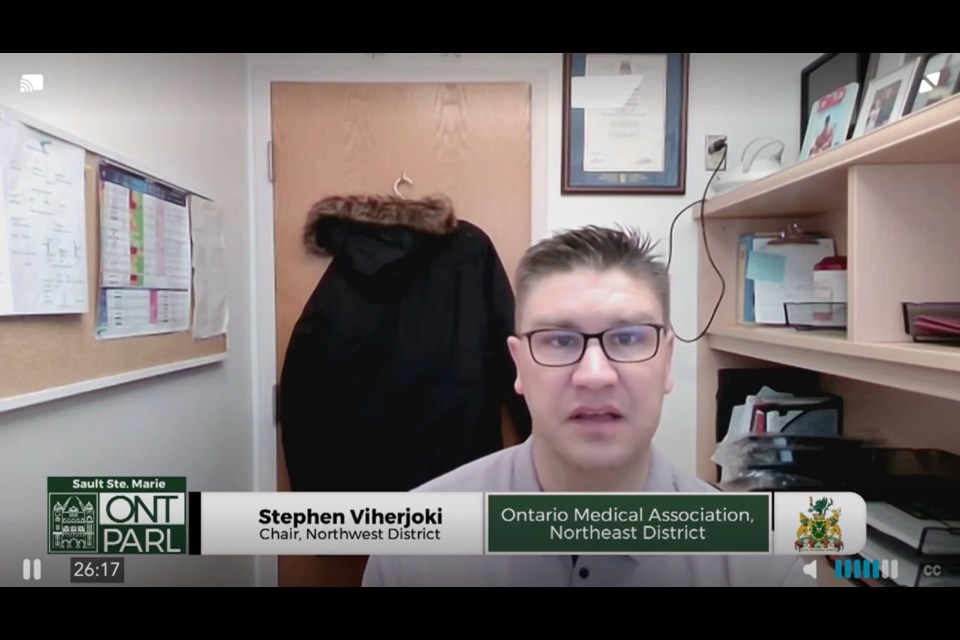Northern Ontario representatives of the Ontario Medical Association presented a plan with steps they say could provide immediate relief to the doctor shortage in the North at the latest provincial pre-budget consultation hearings.
Dr. Stephen Viherjoki, the chief of emergency services for the Dryden Regional Health Centre and chair of the Ontario Medical Association's Northwest district, spoke at the Tuesday session in Sault Ste. Marie, along with Dr. Stephen Cooper, a rural physician from Manitoulin Island representing the association's Northeastern district.
In the presentation, Cooper described the situation the north is facing, with a shortfall of 350 family doctors, internists, psychiatrists, pediatricians, anaesthetists and other sub-specialists. That number is up from 325 from last year.
“It is hard to overstate the consequences for access to care if this trend continues,” Cooper said.
Viherjoki presented a set of solutions from the medical association that he said could be implemented quickly to address three pressing issues, including the shortage of doctors, long wait times and pressures on hospitals.
The first recommendation was to license more foreign-trained physicians, he said.
“Introducing a practice-ready assessment program would rapidly inject a new supply of internationally trained physicians into the system,” Viherjoki said.
“The new program, coupled with a mentorship program designed to keep physicians in the north, could be implemented immediately [and] would potentially be a game-changer in building a lasting supply of doctors in rural northern communities.”
The second recommendation Viherjoki presented would “involve establishing a centralized wait-lists with single intake, referral and triage management systems for surgeries and procedures in each region, including the north.”
“This initiative would provide enhanced transparency regarding wait times and increased access to care,” he added.
The final recommendation made at the hearing was to acquire diagnostic equipment, which would allow some services to be provided directly in long-term care homes in order to relieve pressure on the hospital system.
“These include investments in mobile x-ray clinics for LTC homes and the supports that will allow them to deliver IV antibiotics,” he said. “It also means maintaining the ability of physicians to provide virtual care in LTC homes.”
Viherjoki said small and northern communities don’t have dedicated patient transfer services due to their size, which means ambulance resources are taken up transferring patients from long-term care to the hospital for procedures like an x-ray.
He said having doctors provide care in a LTC with the mobile equipment would allow patients who are fragile to get care in a less disruptive way in a familiar environment and it would free up medical resources.
“We recognize these recommendations alone will not solve all the problems facing our health-care system,” he said. “But they are an important start, and can be implemented quickly.”
